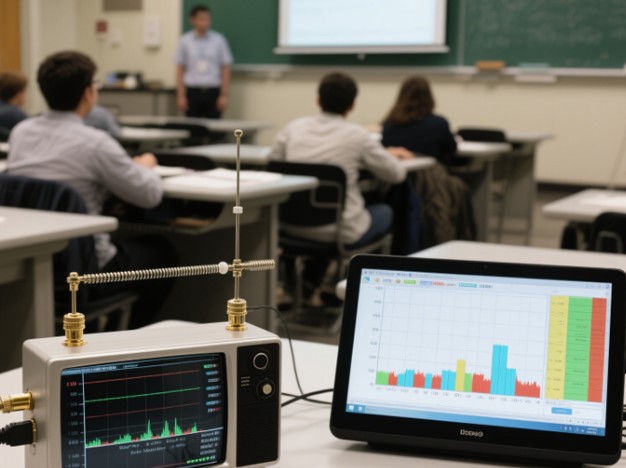
Advanced Signal Management:
SDR enables dynamic adaptation to complex electromagnetic environments. For example, multi-waveform switching systems ensure reliable performance in challenging scenarios.
Adaptive Communication Networks:
Software-defined frequency and protocol switching ensures seamless interoperability across multi-domain operations, including cross-platform systems integration.
Signal Analysis & Optimization:
Real-time identification and processing of spectral activity to support critical decision-making frameworks.
Dynamic Spectrum Optimization:
SDR-powered architectures enable intelligent resource allocation across multi-band networks, enhancing efficiency in high-frequency and wide-area deployments.
Scalable IoT Connectivity:
Cost-effective, multi-standard gateways streamline deployments for smart infrastructure and industrial automation.
Resilient Connectivity Frameworks:
Modular software platforms accelerate the implementation of self-configuring networks in critical scenarios.


Next-Gen Algorithm Development:
SDR-driven dynamic testing environments accelerate research on advanced modulation schemes, including non-orthogonal access methods for next-generation networks.
Collaborative Open-Source Platforms:
Modular toolchains paired with cost-effective SDR hardware empower developers and academic institutions to prototype cutting-edge wireless solutions.
Protocol Compliance Analysis:
In-depth evaluation of industry-specific wireless standards to ensure interoperability and system robustness.
Universal Satellite Connectivity:
Single-platform hardware enables multi-orbit communication through adaptive modulation schemes, supporting diverse satellite constellations.
Long-Range Space Communication:
SDR-based systems ensure reliable data transmission in extreme latency and signal degradation scenarios for deep-space missions.
.


Cross-Protocol Interoperability:
Multi-standard SDR platforms enable seamless integration of regional connectivity frameworks, ensuring global compatibility for next-gen transportation systems.
Dynamic Spectrum Coordination:
AI-driven frequency allocation techniques enhance reliability for autonomous systems operating in high-density aerial environments.
Wireless System Validation:
Emulate multi-standard network environments to assess potential vulnerabilities in cellular infrastructure.
IoT Security Enhancement:
Proactively strengthen encryption frameworks and ensure compliance with evolving industry standards for connected devices.


University Labs: Teach wireless fundamentals with RTL-SDR dongles (FM demodulation, spectrum analysis).
Amateur Satellite Tracking: Capture NOAA weather satellite imagery using DIY SDR setups.
Future-Proof Flexibility: Support 2G to 5G and beyond with software updates.
Cost Efficiency: Replace proprietary hardware with FPGA/GPU-based solutions.
Rapid Deployment: Launch new protocols in days, not years.

Future of SDR Technology
AI-Driven SDR: DeepSig's machine learning models automate modulation recognition.
6G & THz Bands: Integrate reconfigurable intelligent surfaces (RIS) for dynamic beamforming.
Quantum-Ready Systems: Manage classical channels in quantum key distribution (QKD).












